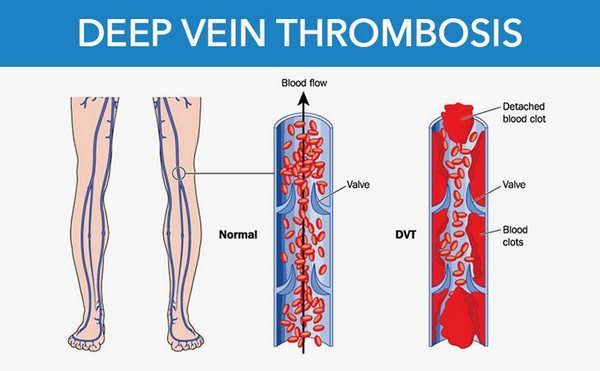
Deep vein thrombosis is a blood clot or thrombus in a deep vein. They are most common in the leg. But they may develop any part of the body. Part of the clot, called an embolus, can break off and travel to the lungs (PE). This can cut off the flow of blood to all or part of the lung. PE is an emergency and may cause death.
There are several risk factors such as obesity, surgery, immobility, birth control pills, a family history of blood clots, varicose veins and cancer.
May-Thurner syndrome (MTS),also known as the iliac vein compression syndrome, is a condition in which compression of the common venous outflow tract of the left lower extremity may cause discomfort, swelling, pain or blood clots (deep venous thrombosis) in the iliofemoral veins.
Most people with DVT develop symptoms of pain, swelling, and redness . Sometime DVT is symptomless. The two most common complications of a blood clot are chronic venous insufficiency and post-thrombotic syndrome(PTS).

Specific treatment will be determined by Vascular Interventional Radiologist(IR) :
The goal of treatments is are to prevent the clot from getting larger, to prevent a blood clot from travelling to the lungs (PE), to decrease the chance of another blood clot forming and to prevent development of PTS.